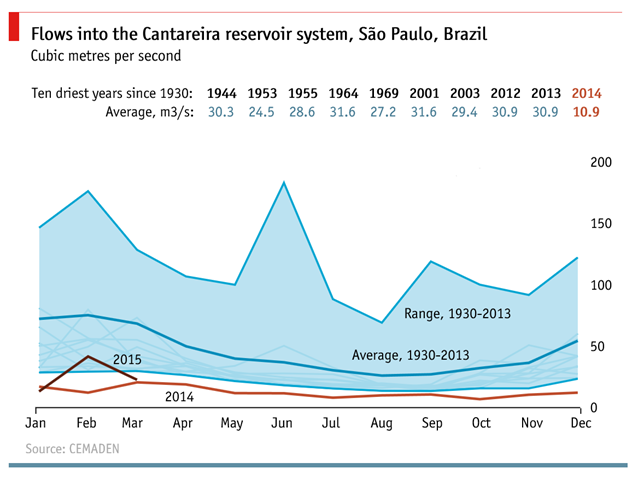February 2015 was wettest month for São Paulo since 1995, but little help for reservoirs
9 March 2015 (The Economist) – February 2015 was the wettest month in the region around São Paulo since 1995, with rainfall 36% above the historical average [This isn’t evident from the graph. I think the author means “36% above the historical minimum.” –Des]. But the water emergency in South America’s biggest metropolis is not over. Because of last year’s record drought, water levels in the Cantareira system of reservoirs—which normally supplies nearly half of the area’s 20m residents—had sunk to just 5% of capacity. On March 9th, they were back up to 12.9%, thanks to the downpours and to a raft of emergency measures, including fines to punish overuse. The government had foolishly put these off until after state and federal elections in October 2014. But the good news ends there. Because of deforestation, rainwater once captured by trees and funnelled into reservoirs turns into violent torrents which bypass them and escape downstream, and not necessarily where you want them to go. As a result, despite above-average rainfall, inflows into the system were below February’s long-term mean. Some 30,000 trees need to be planted to undo the damage, experts reckon. Even if heavy rains continue until the end of the wet season in May (and consumers do not go back to their wasteful habits), Cantareira would enter the dry southern winter just quarter-full, according to Brazil’s disaster-monitoring centre, down from 31% last year. São Paulo is not home and wet just yet.
